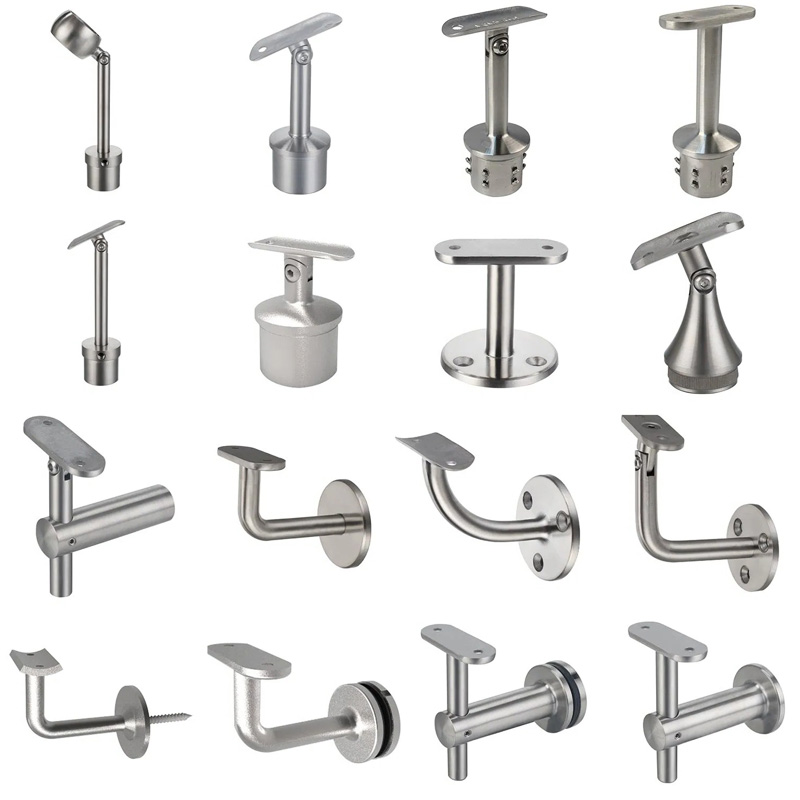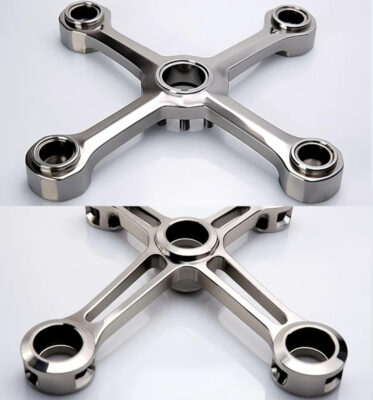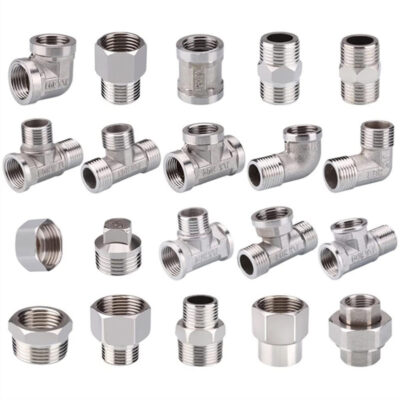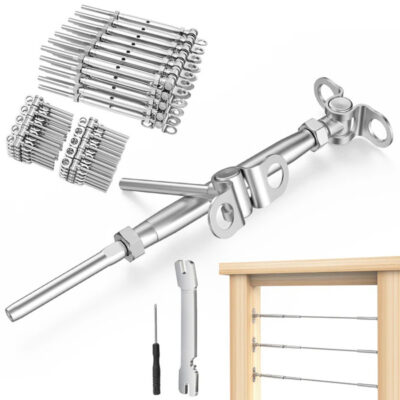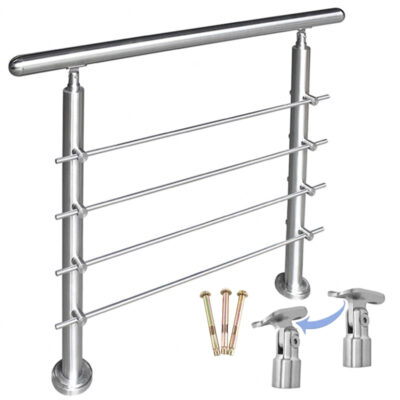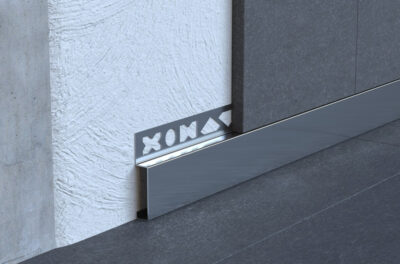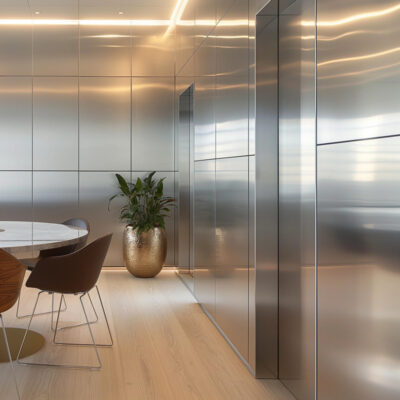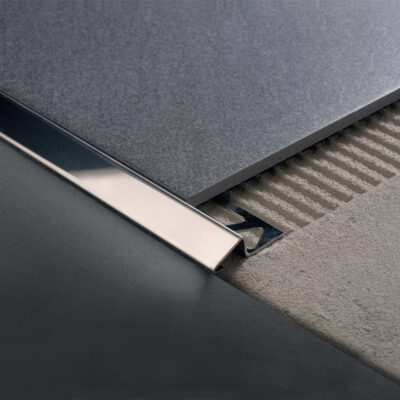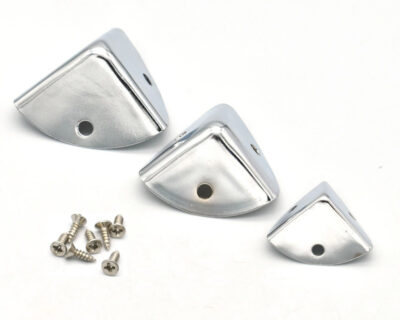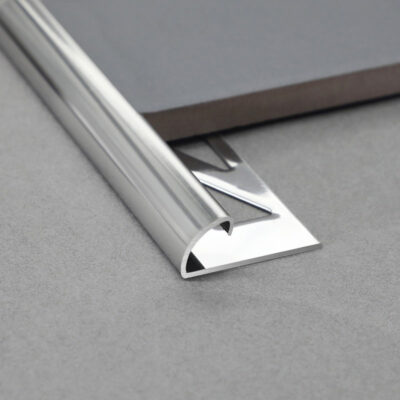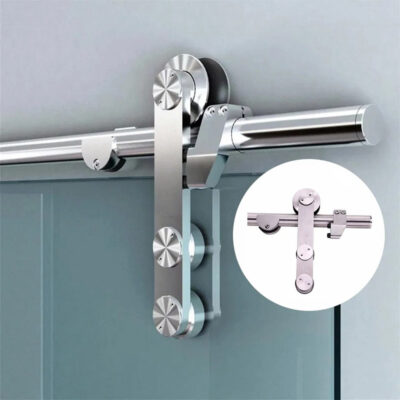The Evolution and Importance of Stainless Steel Handrail Fittings
The first time I encountered a truly exceptional stainless steel railing system was during a renovation project at a coastal property. What struck me wasn’t just the sleek appearance, but how the entire assembly had withstood years of salt spray without a hint of corrosion. The secret, as I later discovered, wasn’t in the railings themselves but in the quality of the fittings holding everything together.
Stainless steel handrail fittings have transformed from purely functional components to essential elements that blend structural integrity with aesthetic appeal. Their evolution traces back to the early 20th century when stainless steel itself was first developed. Before this innovation, handrail systems relied primarily on cast iron or brass fittings, which required extensive maintenance and eventually succumbed to the elements.
The transition to stainless steel represented a significant leap forward. These modern fittings offer superior corrosion resistance, strength-to-weight ratio, and longevity compared to traditional materials. What’s particularly fascinating is how they’ve been refined over decades to address specific environmental challenges, from marine settings to industrial environments where chemical exposure is a concern.
Today, stainless steel handrail fittings serve crucial roles across diverse applications. In commercial spaces, they provide safety compliance while maintaining aesthetic standards. For residential properties, they offer design flexibility and durability that homeowners increasingly demand. Perhaps most importantly, in public infrastructure—from transportation hubs to healthcare facilities—these fittings deliver the reliability essential for high-traffic areas where failure isn’t an option.
A shift I’ve noticed in recent years is the growing emphasis on sustainable building practices. Stainless steel fittings align perfectly with this trend, as they’re fully recyclable and, when properly specified, can last the lifetime of the structure they’re installed in. This combination of safety, aesthetics, and sustainability has cemented their position as standard components in modern architecture and design.
Types of Stainless Steel Handrail Fittings: Form Meets Function
The world of stainless steel handrail fittings is surprisingly diverse, with each component serving distinct purposes within a railing system. Understanding these variations is essential for selecting the right fitting for specific applications.
Base plates and flanges form the foundation of any railing system. These flat, typically round or square components anchor vertical posts to horizontal surfaces. During a recent waterfront project, I discovered that selecting the appropriate base plate thickness was critical—too thin, and the railing would feel unstable; too thick, and the installation became unnecessarily complicated and expensive. Premium base plates, like those from E-Sang, feature precisely drilled mounting holes that allow for secure attachment while maintaining aesthetic appeal.
Connectors and elbows create the transitions and joints within railing systems. These include:
- Straight connectors that join sections of handrail in a linear configuration
- Adjustable connectors allowing for slight angle variations (typically 0-70 degrees)
- Fixed-angle elbows (commonly 90° or 135°) for standard turns
- Variable-angle connectors for custom configurations
What fascinated me when I first began working extensively with these components was how much engineering goes into their design. The internal structure of a quality elbow connector, for instance, includes reinforcement to prevent deformation under load, while maintaining a seamless external appearance.
End caps and brackets represent another crucial category. End caps not only provide a finished look but also prevent injury from exposed rail ends. Brackets, meanwhile, come in wall-mounted, post-mounted, and specialty configurations. During a challenging installation at a heritage building, I found that selecting the right bracket style was essential for maintaining historical aesthetics while meeting modern safety requirements.
Specialty fittings address unique situations that standard components can’t handle:
| Fitting Type | Primary Application | Key Specifications | Installation Complexity |
|---|---|---|---|
| Swivel Adaptors | Staircases with changing angles | Rotation range: 0-180° | Moderate |
| Saddle Fittings | Joining round tubes to flat surfaces | Load capacity: 150-300 lbs | Low |
| Glass Clamps | Glass panel integration | Compatible with 8-12mm glass | High |
| Handrail Returns | ADA compliance at rail terminations | Extension: 12″ minimum (ADA) | Moderate |
Designer Matt Reynolds, principal at Urban Rail Systems, explained to me during a consultation: “The right specialty fitting can solve problems that would otherwise require custom fabrication. The key is knowing which fitting applies to which situation—something that comes with experience.”
Fittings for glass systems deserve special mention. These specialized components have evolved dramatically in recent years, allowing for nearly invisible connections while maintaining structural integrity. The trend toward minimalist design has accelerated development in this area, with manufacturers creating increasingly elegant solutions.
One consideration often overlooked is the compatibility between different fittings within a system. Not all components from different manufacturers will work together seamlessly. This becomes especially important when retrofitting or extending existing railings—a situation I encountered when adding accessibility features to an older commercial building last year.
Material Quality: The Foundation of Exceptional Stainless Steel Fittings
When it comes to stainless steel handrail fittings, not all materials are created equal. The grade of stainless steel used fundamentally determines performance characteristics, especially in challenging environments.
The two most common grades for quality handrail fittings are 304 and 316 stainless steel. Grade 304, sometimes called 18/8 for its composition of 18% chromium and 8% nickel, offers excellent corrosion resistance for most indoor applications. I specified this grade for a recent office building project where cost considerations were important but exposure to harsh elements wasn’t a concern.
Grade 316, however, includes molybdenum in its composition, significantly enhancing corrosion resistance, particularly against chlorides and salt. This makes it the definitive choice for coastal environments, pool areas, and locations exposed to de-icing salts. The cost premium (typically 20-30% higher than 304) pays dividends in longevity and reduced maintenance.
During a conversation with metallurgist Dr. Helena Chen, she emphasized a point often missed by installers: “The internal components of fittings matter just as much as their exterior. Quality manufacturers use consistent material grades throughout the fitting, while inferior products might use lower-grade materials internally to cut costs.”
Beyond the grade, finish options significantly impact both aesthetics and performance:
| Finish Type | Surface Appearance | Corrosion Resistance | Best Applications | Maintenance Requirements |
|---|---|---|---|---|
| #4 Brushed | Linear, satin texture | Good | Interior, commercial | Moderate |
| #8 Mirror | Reflective, polished | Very good | High-end, decorative | High (shows fingerprints) |
| #6 Satin | Subdued reflection | Good | Residential, mixed-use | Low to moderate |
| Bead Blasted | Matte, non-reflective | Excellent | Industrial, high-traffic | Low |
| Electro-polished | Smooth, bright | Superior | Healthcare, food service | Low |
The wall thickness of hollow components significantly affects durability and load capacity. Standard thicknesses range from 1.5mm to 3mm, with thicker walls providing greater structural integrity but at increased weight and cost. For a healthcare facility railing system I designed last year, specifying 2.5mm wall thickness proved essential for withstanding the institutional environment’s demands.
Manufacturing processes also impact quality. Cold-formed fittings generally exhibit superior strength compared to cast components, though casting allows for more complex shapes. The welding methods used to join sections are equally important—precision TIG welding creates stronger, more attractive joints than alternatives.
An aspect I’ve learned to scrutinize is the consistency of dimensions. Quality fittings maintain tight tolerances, ensuring components fit together precisely. This might seem minor until you’re on-site with a partially assembled railing and discover components that don’t align properly—a situation I encountered with a budget supplier that resulted in costly delays.
Testing standards provide assurance of performance. The American Society for Testing and Materials (ASTM) has established several relevant standards, including ASTM A554 for stainless steel mechanical tubing and ASTM A240 for plate materials. Reputable manufacturers will reference these standards in their specifications and provide testing certifications upon request.
Installation Best Practices: Ensuring Longevity and Safety
Installing stainless steel handrail fittings correctly is as crucial as selecting quality components. Having overseen dozens of installations, I’ve identified several practices that consistently deliver superior results.
Proper preparation begins with accurate measurement and layout. I learned this lesson the hard way early in my career when a small measurement error compounded across multiple sections, resulting in a railing that didn’t align with its termination point. Always verify measurements twice, accounting for wall irregularities and fitting dimensions.
Tools specific to stainless steel work make a significant difference. Using standard steel tools on stainless can cause cross-contamination with carbon steel particles, potentially leading to surface rust. I maintain a dedicated set of tools for stainless work, including:
- Tungsten carbide drill bits designed for stainless steel
- Non-marring clamps with protective jaw faces
- Stainless steel-specific cutting wheels for angle grinders
- Rubber mallets for adjustments without surface damage
When cutting stainless steel tubing, cooling is essential to prevent heat discoloration at cut points. A trick I’ve adopted is wrapping the cutting area with a water-soaked cloth, which helps maintain temperature during cutting operations.
For secure mounting, understanding the substrate is critical. Different mounting surfaces require specific hardware:
- Concrete: Wedge anchors or epoxy-set threaded rod
- Wood: Lag bolts with appropriate embedment depth
- Metal: Through-bolts or welded connections
- Hollow walls: Toggle bolts with adequate load rating
Engineering consultant James Turner shared a valuable perspective during a project consultation: “The mounting hardware is often the weakest link in railing systems. Specify hardware with a safety factor at least 2.5 times greater than the anticipated maximum load.”
When assembling components, applying a small amount of anti-seize compound to threaded connections prevents galling—a form of thread damage common with stainless fasteners. This simple step avoids the frustration of seized connections during installation or future maintenance.
Some installers overlook proper torque specifications for fittings. Over-tightening can damage components or create internal stress that leads to premature failure. Manufacturer specifications should be followed using a calibrated torque wrench for critical connections.
Protection during installation prevents costly damage. I require installers to maintain protective films or tapes on components until final cleanup and to use dedicated stainless steel brushes for any necessary adjustments to avoid cross-contamination.
The inevitable minor scratches that occur during installation can be addressed with specialized stainless steel restoration kits. These include graduated abrasives and polishing compounds that restore the protective oxide layer. Taking time for these touch-ups significantly enhances the final appearance and long-term performance.
A challenge I consistently face is managing the interface between different metals. When stainless steel contacts dissimilar metals, galvanic corrosion can occur. Using nylon washers or other isolating materials at these junctions prevents this electrochemical reaction.
Final inspection should include checking all connections for proper alignment and security. A practice I’ve adopted is applying a small mark with removable tape at set screw locations after final tightening, making it easy to spot any connections that loosen over time during maintenance inspections.
Maintenance and Longevity: Protecting Your Investment
Despite stainless steel’s reputation for being maintenance-free, proper care significantly extends the lifespan of handrail fittings and preserves their aesthetic appeal. Having managed properties in diverse environments, I’ve observed striking differences in longevity between maintained and neglected systems.
Regular cleaning is the foundation of effective maintenance. The frequency depends heavily on environmental conditions:
- Urban or industrial settings: Monthly cleaning
- Coastal environments: Bi-weekly cleaning
- Indoor applications: Quarterly cleaning
- Food processing or healthcare: Weekly cleaning
The cleaning method matters substantially. A mistake I encountered at a seaside property was the use of chlorine-based cleaners, which actually promoted corrosion rather than preventing it. For routine cleaning, warm water with a mild soap is generally sufficient. For more stubborn contaminants, specialized stainless steel cleaners that remove deposits while maintaining the protective oxide layer are worth the investment.
When working with maintenance teams, I emphasize the importance of material-appropriate tools. Using steel wool or carbon steel brushes introduces particles that can cause surface rusting. Soft cloths, nylon brushes, and non-abrasive pads designed for stainless steel prevent this cross-contamination.
Environmental factors create specific maintenance challenges:
| Environment | Primary Concern | Recommended Treatment | Maintenance Frequency |
|---|---|---|---|
| Coastal | Salt deposits | Fresh water rinse; mild detergent | Bi-weekly |
| Urban/Industrial | Particulate pollution | Mild detergent; protective wax | Monthly |
| Pool Areas | Chlorine exposure | Neutralizing rinse; protective coating | Weekly |
| Winter Climate | De-icing salt | Frequent rinsing; protective wax | After salt application |
| Heavy Use | Fingerprints, smudges | Microfiber cleaning; fingerprint-resistant products | As needed |
For properties with limited maintenance budgets, I recommend protective treatments that reduce cleaning requirements. Specialized clear coatings designed for stainless steel create a sacrificial layer that’s easier to maintain than the stainless itself. These need reapplication every 1-2 years but can significantly reduce overall maintenance costs.
Industry safety expert Carina Lopez pointed out during a facility management conference: “Maintenance isn’t just about aesthetics—it’s about safety. Corroded fittings can fail catastrophically, especially at connection points under tension. Regular inspection is as important as cleaning.”
This inspection protocol should include:
- Checking for signs of discoloration (often the first indicator of corrosion)
- Testing the security of connections and mounting points
- Looking for stress cracks, particularly around welds and bends
- Verifying that moving parts (in adjustable fittings) remain functional
An emerging trend I’ve embraced is documenting maintenance through digital tools. Creating a simple database of installation photos allows maintenance personnel to identify changes from the original condition, spotting potential issues before they become serious problems.
For properties facing extreme conditions, sacrificial anodes can be incorporated into the design. These components, made of more reactive metals like zinc, corrode preferentially, protecting the stainless steel components. This approach is particularly valuable in marine environments.
Troubleshooting common issues requires understanding their causes. Tea staining—superficial rust-colored discoloration—typically indicates inadequate cleaning rather than actual material failure. Addressing this early with appropriate cleaners and more frequent maintenance prevents progression to more serious corrosion.
Design Considerations: Balancing Form and Function
The aesthetic integration of stainless steel handrail fittings into architectural spaces requires careful consideration beyond mere functionality. Having collaborated with architects on projects ranging from minimalist modern to historical renovations, I’ve developed an appreciation for how these seemingly small components significantly impact visual cohesion.
Scale and proportion are fundamental considerations. Oversized fittings can overwhelm delicate spaces, while undersized components may appear insubstantial in grand environments. During the renovation of a historic theater, we selected fittings with a slightly larger profile than standard to complement the building’s dramatic proportions—a subtle detail that contributed significantly to the authentic period feel.
The relationship between fittings and the surrounding materials creates visual dialogue. Stainless steel components can:
- Contrast deliberately with warm materials like wood
- Blend harmoniously with glass and concrete
- Complement other metal elements through finish matching
- Create transitions between different architectural elements
Architectural designer Sarah Kwan shared an insight during our collaboration on a mixed-use development: “The most successful railing systems are those where the fittings almost disappear, allowing the overall form to take precedence. This requires selecting components that work in concert rather than competing for attention.”
Customization options have expanded dramatically in recent years. Beyond standard catalog offerings, manufacturers increasingly provide:
- Custom angles for complex geometries
- Special finishes to match existing elements
- Modified dimensions for unique applications
- Hybrid materials incorporating wood or glass elements
The desired level of visual prominence influences fitting selection. In some designs, fittings are intentionally emphasized as decorative elements, while others aim for minimal visual interruption. For a public library project, we chose concealed fixing methods for wall brackets, creating the illusion of handrails floating parallel to the wall without visible support—a detail that enhanced the space’s clean, contemporary aesthetic.
Current design trends show movement toward:
- Minimal visual mass with slender profiles
- Integration of LED lighting within railing systems
- Frameless glass systems with nearly invisible connections
- Mixing materials for textural contrast
Regional and cultural preferences also influence design choices. Northern European designs typically favor clean lines and visible structural elements, while Mediterranean styles might incorporate more ornamental details. Understanding these cultural nuances helps create appropriate designs for specific contexts.
The digital age has transformed the design process. Visualization tools allow clients to experience different fitting options before final selection. During a recent corporate headquarters project, we created renderings showing three different fitting styles in the actual space, helping the client confidently select components that aligned with their brand identity.
Modular systems have gained popularity for their versatility and ease of installation. These systems feature standardized components that can be configured in various ways, offering design flexibility while maintaining consistent aesthetics. For projects with tight timelines, this approach significantly reduces lead times compared to fully custom solutions.
Future trends suggest increasing integration of technology into railing systems. Embedded sensors for crowd monitoring in public spaces, interactive lighting that responds to touch, and antimicrobial coatings are all emerging innovations that will influence fitting design in coming years.
Regulatory Compliance and Safety Standards
Navigating the regulatory landscape for handrail systems can be challenging, but compliance is non-negotiable from both legal and safety perspectives. The requirements for stainless steel handrail fittings vary across jurisdictions, creating a complex matrix of standards that must be understood for each project.
The International Building Code (IBC) provides the foundation for most local regulations in the United States, with specific requirements for:
- Minimum and maximum rail heights (typically 34″-38″ for standard rails)
- Maximum opening sizes (4″ sphere passage test)
- Load resistance (typically 200 lbs concentrated load)
- Graspability dimensions for functional handrails
These requirements translate directly into specifications for fittings. During a hospital renovation project, we discovered that standard wall brackets didn’t provide sufficient clearance for the required 1.5″ space between the wall and handrail—a detail overlooked in initial planning that required custom components.
Americans with Disabilities Act (ADA) compliance adds another layer of requirements, particularly for handrail extensions and returns. The 12″ extension requirement at stairs combined with the need for smooth, rounded returns has driven the development of specialized ADA-compliant end fittings. These components elegantly solve compliance challenges while maintaining aesthetic standards.
Building safety expert Thomas Reid emphasized during a code consultation: “When it comes to railings, the fittings are often where failures occur under load. Testing complete assemblies—not just individual components—is essential for verifying real-world performance.”
This system-level testing is increasingly required by local authorities having jurisdiction. The most common standard is ASTM E935, which outlines testing methodologies for railing assemblies. Documentation of compliance typically includes:
- Load test certification
- Material compliance documentation
- Detailed installation specifications
- Maintenance requirements
For public projects, additional requirements often apply:
| Sector | Primary Standard | Key Requirements | Verification Method |
|---|---|---|---|
| Education | ASTM E985 | Enhanced load capacity, no pinch points | On-site inspection |
| Healthcare | FGI Guidelines | Cleanability, continuous gripping surfaces | Material certification |
| Transportation | AASHTO | Impact resistance, visibility | Third-party testing |
| Housing | ICC A117.1 | Universal design elements | Plan review and inspection |
The global variation in standards presents challenges for international projects. European standards (EN 1090 and related documents) generally emphasize design methodology over prescriptive requirements, while North American codes tend toward specific dimensional and loading criteria. Understanding these differences is crucial when specifying components for international projects.
Working through a particularly complex project for a transportation terminal, I found that early engagement with code officials was invaluable. Pre-submittal conferences allowed us to address potential compliance issues before final design, avoiding costly revisions later.
Documentation requirements have increased substantially in recent years. Beyond basic material certifications, many jurisdictions now require:
- Professional engineer stamps on structural calculations
- BIM model integration of railing systems
- Third-party verification of testing results
- Detailed maintenance protocols as part of permit submissions
The liability implications of non-compliance extend beyond immediate safety concerns to potential long-term legal exposure. Properly documented compliance provides protection for all stakeholders—designers, installers, property owners, and manufacturers.
A trend I’ve observed is the increasing focus on lifecycle safety, not just initial installation compliance. This includes consideration of how components will perform after years of use, environmental exposure, and potential misuse. Selecting fittings with appropriate safety factors and documented durability testing addresses these concerns.
Conclusion: Making Informed Decisions About Stainless Steel Handrail Fittings
After spending more than a decade working with various railing systems across different environments, I’ve come to appreciate that stainless steel handrail fittings represent a critical intersection of safety, aesthetics, and longevity. The choices made during specification and installation have implications that extend throughout the life of the building.
The most successful projects share common characteristics: thoughtful material selection based on environmental conditions, appropriate fitting choices for the intended use, proper installation techniques, and established maintenance protocols. When these elements align, the result is a railing system that provides decades of service with minimal intervention.
That said, even the finest fittings have limitations. In extremely corrosive environments, regular maintenance becomes essential regardless of material grade. Budget constraints sometimes necessitate compromises, though these should never affect safety-critical components. And while stainless steel offers exceptional durability, inappropriate application or installation can undermine its inherent advantages.
Looking toward future developments, I anticipate continued innovation in several areas:
- Simplified connection systems that reduce installation time while maintaining structural integrity
- Enhanced finishes that provide additional corrosion resistance without compromising appearance
- Smart components that monitor structural performance and alert to potential issues
- More sustainable manufacturing processes with reduced environmental impact
Selecting the right stainless steel handrail fittings ultimately requires balancing multiple factors: environmental conditions, regulatory requirements, aesthetic goals, budget constraints, and maintenance capabilities. By understanding these considerations and their interrelationships, designers and property owners can make informed decisions that ensure safety, compliance, and visual cohesion for years to come.
Whether for a residential staircase or a major public infrastructure project, quality fittings form the backbone of successful railing systems—often unnoticed when they perform perfectly, but immediately apparent when they fail. The investment in proper specification and installation pays dividends through reduced maintenance, enhanced safety, and enduring visual appeal.
Frequently Asked Questions about Stainless Steel Handrail Fittings
Q: What are Stainless Steel Handrail Fittings, and why are they used?
A: Stainless Steel Handrail Fittings are components designed to support and connect handrails, ensuring stability and safety. They are popular due to their durability, corrosion resistance, and sleek appearance, making them ideal for both functional support and aesthetic enhancement in various architectural settings.
Q: What types of Stainless Steel Handrail Fittings are available?
A: There are several types of Stainless Steel Handrail Fittings available, including:
- Handrail Brackets: Attach handrails to walls or supporting structures.
- End Caps: Cover exposed ends of handrails for a finished look.
- Elbows and Connectors: Connect handrail sections at corners or direction changes.
- Flanges and Base Plates: Secure handrails to floors or horizontal surfaces.
- Joiners: Connect straight sections of handrail tubing seamlessly.
Q: How do I choose the right material grade for Stainless Steel Handrail Fittings?
A: When selecting a material grade for Stainless Steel Handrail Fittings, consider the environment where they will be used. 304 Stainless Steel is suitable for most indoor and outdoor applications due to its good corrosion resistance and strength. 316 Stainless Steel offers superior corrosion resistance, making it ideal for coastal areas or high-humidity environments.
Q: What are the best practices for installing Stainless Steel Handrail Fittings?
A: Proper installation of Stainless Steel Handrail Fittings requires careful planning and execution. Key best practices include:
- Measure and plan the layout carefully.
- Ensure the installation surface is clean and level.
- Use appropriate tools and follow manufacturer’s instructions.
- Conduct regular inspections to ensure stability and safety.
Q: How do I maintain Stainless Steel Handrail Fittings over time?
A: Maintaining Stainless Steel Handrail Fittings involves regular inspections to ensure they remain secure and stable. Periodically check for any loose fittings and tighten them as needed. Also, ensure there are no sharp edges or protruding screws, and conduct regular cleaning to preserve their appearance and durability.

